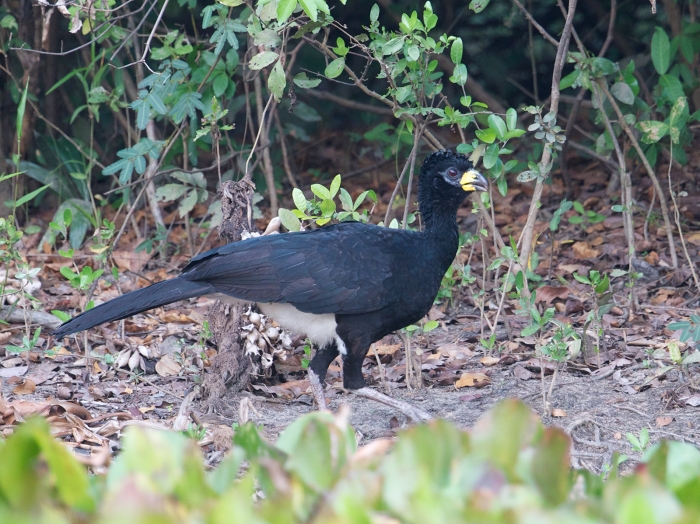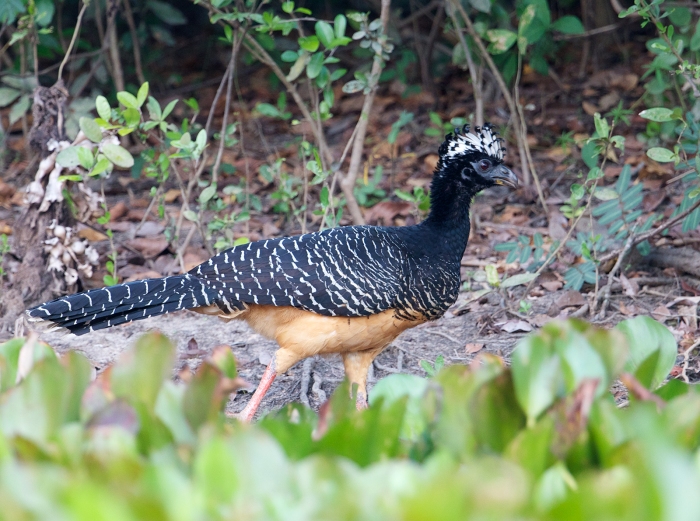Return of Bird of the Week: Bare-faced Curassow

Bare-faced Curassow Male, Pantanal, Brazil
This is a smaller relative of last week’s Great Curassow, found in the Amazon basin and down into Paraguay and Argentina. It’s also sexually dimorphic. The males is black, with a white belly, extensive bare, black skin around the eye and a bi-colored, black and yellow bill. The crest is tightly curled black feathers.

Bare-faced Curassow Female, Pantanal, Brazil
The female is a beautiful bird, with a rufous belly, barred back and tail and a splendid crest.
This is a crepuscular species, usually out only in the predawn and evening twilight. It usually emerges from the forest into clearings to foage, as these two birds did.
There are three subspecies; this is fasciolata, found in southwestern Brazil, including the Pantanal. All of the subspecies are primarily ground foragers, eating seeds, fallen fruit, nuts and sometimes flowers. It also eats invertebrates, especially large beetles. It has a significant role as a seed caster.
There are some suggestions of lekking among males – competitive displays to attract females – but nothing definitive. It nests on a platform nest off the ground, usually concealed in a thicket or creepers, usually raising two chicks. Kids hang with the parents, but there’s not mucin the published literature for details.
The Bare-faced Curassow is believed to be vulnerable. Outside of national parks and preserves, it is threatened by subsistence hunting and habitat loss. The pinima subspecies, found in the northerly Amazon basin, is critically endangered, large as a result of habitat loss.
For more bird photographs, please visit Frozen Feather Images.